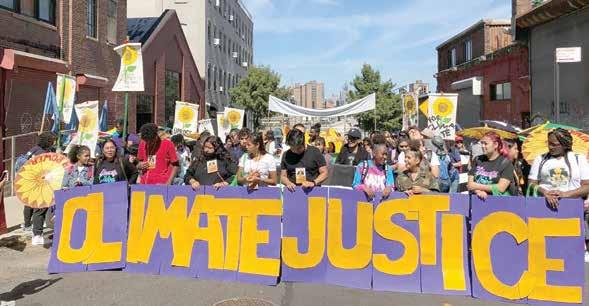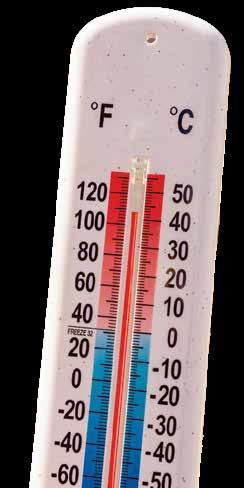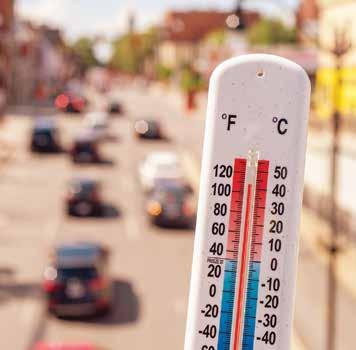
6 minute read
Health
Why the United Nations ‘Climate Code Red’ is Vital for People of Color
Stacy M. Brown WI Senior Writer
A United Nations [UN] special panel of scientists has recently confirmed what many already knew: climate change is real.
It’s also among the most imminent threats to human society.
In neighborhoods of color, environmental hazards can be found everywhere.
“Climate change has long disproportionately impacted Black and Brown communities and so too has the work of recovery from climate-driven disasters,” said LaTanja Silvester of the national nonprofit Resilience Force.
“At the center of the rapidly growing resilience industry is an expanding recovery and reconstruction workforce disproportionately made up of Black, Brown, poor and working-class people who are often victims of disasters themselves,” Silvester said.
“Among other things, we’re calling on future climate-driven recovery efforts to close the widening American resilience divide between high- and low-income communities and to reduce the risk for Black, Brown, Native, poor, rural and small-city communities,” she said.
“Widespread and rapid changes in the atmosphere, ocean, cryosphere and biosphere have occurred,” concluded the Intergovernmental Panel on Climate Change (IPCC), the UN’s body for assessing the science related to climate change.
“It is unequivocal that human influence has warmed the atmosphere, ocean and land,” wrote the authors of the report titled “AR6 Synthesis Report: Climate Change.”
The report included a “Code Red” alert from scientists who warned that human existence now faces its
5 Climate change has disproportionately impacted people of color across the globe. (Photo courtesy UpRose)
most imminent threat. Historically, communities of color have lived in hazard zones.
A 2020 Princeton University report put it bluntly:
“Annually, the United States Oil and Gas Industry releases about 9 million tons of methane gas and other toxic chemicals into the atmosphere.
“African American and low-income communities are disproportionately affected by air pollution in the United States. For example, more than one million African Americans live within a half-mile of
Neighborhoods of Color Are Hotter Than White Ones Regardless of Income
White Urban, Small Town Residents Benefit From More Infrastructure
Sarafina Wright WI Contributing Writer
As a heat wave pummeled the east coast, researchers find that non-white neighborhoods are hotter than those of color, as noted in the study “Widespread Race and Class Disparities in Surface Urban Heat Extremes Across the United States” first published by Earth’s Future, AGU’s journal on July 13.
Using land surface temperatures during summer heat waves collected by a NASA satellite, researchers looked at 1,056 U.S. counties with more than 10 developed census tracts.
They found the poorest tracts — those with lowest average education levels — within a county are significantly hotter than the richest, and more educated.
They also found that neighborhoods with higher Black, Hispanic, and Asian population shares are hotter than the more White, non-Hispanic areas in each county.
“Although individual locations have different histories that have contributed to race- and class-based geographies, we find that the physical features of the urban environments driving these surface heat exposure gradients are fairly uniform across the country,” study authors wrote.
“Systematically, the disproportionate heat surface exposures faced by minority communities are due to more built-up neighborhoods, less vegetation, and—to a lesser extent— higher population density.”
Experts agree that particularly in summer, warming in cities due to HEAT Page 44


natural gas facilities, over one million African Americans face a ‘cancer risk above EPA’s level of concern’ due to unclean air and more than 6.7 million African Americans live in the 91 U.S. counties with oil refineries.
“In total, African Americans are 75 percent more likely than white people to live in ‘fence-line communities’ (areas near commercial facilities that produce noise, odor, traffic, or emissions that directly affect the population). Additionally, exposure to poor air quality can cause numerous health problems such as asthma.”
Approximately 13.4 percent of African American children have asthma as compared to only 7.3 percent of white children.
“Redlining didn’t just deprive people of color of wealth-building opportunities from homeownership in prime locations. Instead, it consigned them to the most polluted areas, near industrial facilities, chemical plants and the like,” asserted Bruce Mirken, a spokesperson for the nonprofit Greenlining Institute.
“Freeways were deliberately placed in locations that disrupted and segregated nonwhite neighborhoods while forcing them to choke on increased exhaust fumes,” Mirken added.
Efforts to fight climate change must follow the example of California’s Transformative Climate Communities program, or TCC, Mirken insisted.
“TCC directly involves impacted communities in designing and implementing plans to reduce carbon emissions and build healthier neigh-
CLIMATE Page 44
CDC Announces Disease Forecasting Center
WI Staff Report
The Centers for Disease Control and Prevention [CDC] on Wednesday, Aug. 18, announced a new center designed to advance the use of forecasting and outbreak analytics in public health decision making.
In a news release, officials said the Center for Forecasting and Outbreak Analytics will bring together next-generation public health data, expert disease modelers, public health emergency responders and high-quality communications to meet the needs of decision makers.
The center launches with a goal of predicting disease threats and providing early warning and real-time data on outbreaks.
Health officials said it would accelerate access to and use of data for public health decision-makers who need information to mitigate the effects of disease threats such as social and economic disruption.
The center will prioritize equity and accessibility, while serving as a hub for innovation and research on disease modeling.
“This is an amazing opportunity for CDC and public health as we stand up the country’s first government-wide public health forecasting center,” said CDC Director Dr. Rochelle P. Walensky.
“We are excited to have the expertise and ability to model and forecast public health concerns and share information in real-time to activate governmental, private sector and public actions in anticipation of threats both domestically and abroad.”
The center, with initial funding from the American Rescue Plan, will focus on three key functions: • Predict: Undertake modeling and forecasting; enhance the ability to determine the foundational data sources needed; support research and innovation in outbreak analytics and science for real-time action; and establish appropriate forecasting horizons. • Connect: Expand broad capability for data sharing and integration; maximize interoperability with data standards and utilize opensource software and application programming interface capabilities, with existing and new data streams from the public health ecosystem and beyond. • Inform: Translate and communicate forecasts; connect with key decision-makers across sectors including government, businesses, and non-profits, along with individuals with strong intergovernmental affairs and communication capacity for action.
“I am thrilled to be joining an exceptional team at CDC to build new capabilities for the fight against pandemics,” said Dr. Dylan George, who will serve as director for operations, in a statement. “Pandemics threaten our families and communities at speed and scale – our response needs to move at speed and scale, too.” WI
















